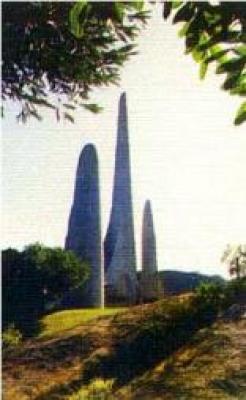This unique language "just grew' from the soil of South Africa. In the human melting pot of the Cape it was inevitable that, from the original Dutch spoken by the first settlers, a colloquial form would be evolved by people such as the Khoikhoi and slaves from Malaya, Indonesia, Madagascar and West Africa.
These diverse peoples all needed to communicate and a modified version of Dutch, with many words from the other languages, was used as a language common to all. It developed further as Huguenot settlers added words and altered the sound of other words.
The struggle to gain recognition for Afrikaans as a written language was directed and carried out from Paarl. The Language Route centres on Dal Josaphat where a number of farms and buildings are to be found in which many of the events relating to the struggle for recognition of the language and the First Afrikaans Language Movement took place.
One such building is the Gedenk School der Hugenoten (Huguenot Commemorative School) on the farm Kleinbosch. This illustrates the role played by wine farmers (they were not all academics) in the Language Movement.
Another prominent building is the Gymnasium School in Main Street, founded in January 1858, with its intriguing Egyptian motifs on the facade. Arnoldus Pannevis was a Dutch teacher of classical languages at the school and formed the first institute for the new language - "Genootskap van Regte Afrikaners'.
The Guild of True Afrikaners (Genootskap van Regte Afrikaners) had its inaugural meeting in Huis Gideon Malherbe in Pastorie Str., named after the then owner who was a prominent farmer of that time.
The Afrikaans language Museum is now situated in this building where one may view the first printing press used to produce Afrikaans publications such as "Die Patriot".
The Afrikaans Language Monument was erected in 1975 to honour the Afrikaans Language.
The Monument's design has specific meanings: Three linked columns symbolise the contribution of the Western world to Afrikaans, three rounded shapes represent the contribution of Africa, and a wall for the contribution of the Malaysian people. A fountain symbolizes new ideas and a pillar soaring 57 meters above the fountain represents the growth of the language.
The pillar is hollow, and light from above pours down it, illuminating the fountain. A second pillar represents the political development of South Africa and its close associations with the growth of Afrikaans.



